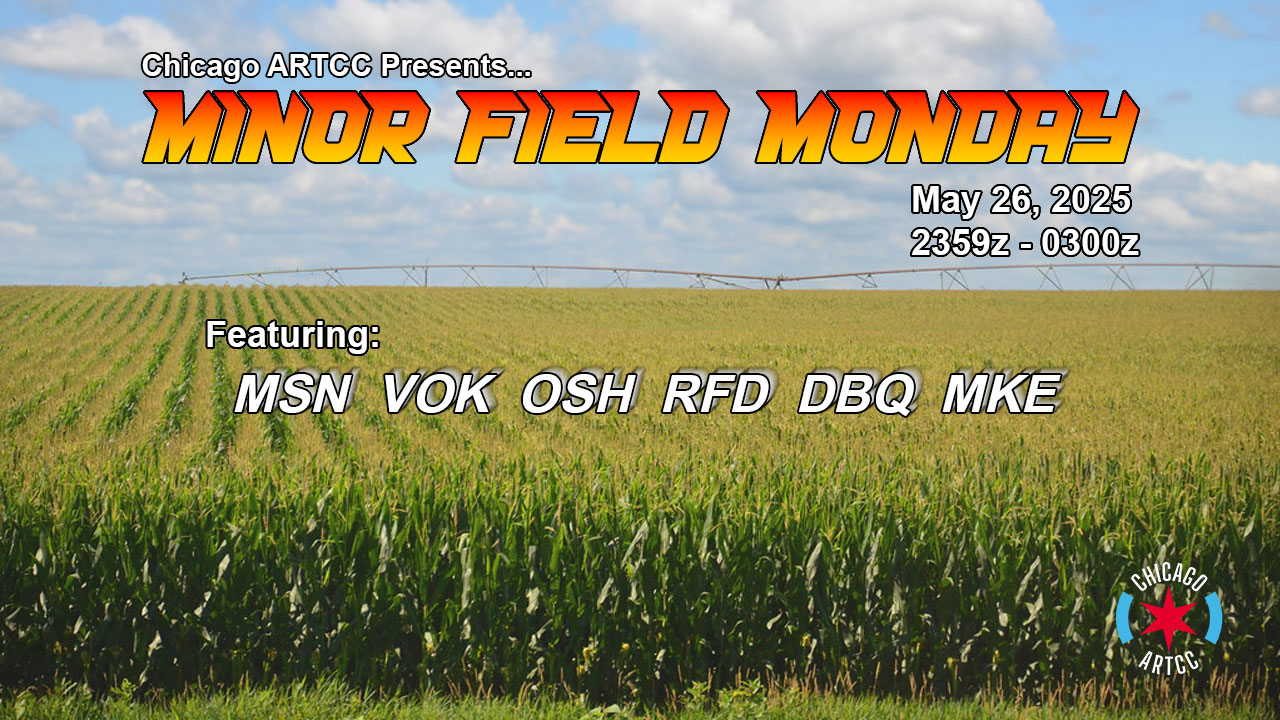71
News / ZAU seeks a Webmaster
« Last post by Zakery Husk on May 06, 2025, 11:41:47 PM »ZAU is seeking a Webmaster.
Key Responsibilities:
- Reports to the Air Traffic Manager and Deputy Air Traffic Manager
- Develops, manages, and oversees Web Services, APIs, E-mail, and other systems
- Responds quickly to website and data system needs
- Develops policies and procedures for operation and maintenance of the ARTCC web and data systems
- Forms, oversees, and manages the ZAU Web Team
- Other duties as assigned by the ATM or DATM
Basic Requirements:
- Supports the Chicago ARTCC’s mission of “Creating professional controller’s, maintaining a high degree of integrity” while creating and maintaining an open and accepting community.
- Serves as a leader to coach and motivate controllers while upholding a culture that builds exceptional internal and external pilot experiences.
- Supports and participates in initiatives that give back to the VATSIM community.
- Supports the recruitment, retention, and development of a diverse range of talented people.
- Strengthens others through consistent feedback while driving productivity and morale.
- Holds self and others accountable to high performance standards while providing pilots with memorable experiences.
- Partners in the development of strategy and helps to translate into specific priorities, objectives, and action plans.
- Attends periodic meetings to report on ARTCC activities.
Additional Requirements:
- Must have at least a Student 1 (S1) rating
- Must be an active member of the VATSIM network in good standing with no significant disciplinary history
- Must be proficient in modern web programming languages and techniques, including, HTML, MySQL, JavaScript, Rust, CSS, vue, GoLang.
- Must have excellent written and oral communication skills
- Must be able to work in a team environment
- Must display leadership qualities
- Must be available for regular correspondence (via the primary means of e-mail and discord), as well as routinely checking VATUSA forums and other outlets for official notices
- Be able to meet all activity requirements as outlined in ZAU Admin Policy and all sections thereof (as appropriate).
This position requires a significant commitment to ZAU and VATSIM. Roles and responsibilities may change as needed.
Applications Shall Include:
- Full name, active email, and VATSIM CID
- Resume detailing relevant experience and skills (include any applicable real-world experience)
- Sample of work that demonstrates ability
Candidates shall email their application package to DATM@zauartcc.org with the subject title “ZAU WM Application”.
Key Responsibilities:
- Reports to the Air Traffic Manager and Deputy Air Traffic Manager
- Develops, manages, and oversees Web Services, APIs, E-mail, and other systems
- Responds quickly to website and data system needs
- Develops policies and procedures for operation and maintenance of the ARTCC web and data systems
- Forms, oversees, and manages the ZAU Web Team
- Other duties as assigned by the ATM or DATM
Basic Requirements:
- Supports the Chicago ARTCC’s mission of “Creating professional controller’s, maintaining a high degree of integrity” while creating and maintaining an open and accepting community.
- Serves as a leader to coach and motivate controllers while upholding a culture that builds exceptional internal and external pilot experiences.
- Supports and participates in initiatives that give back to the VATSIM community.
- Supports the recruitment, retention, and development of a diverse range of talented people.
- Strengthens others through consistent feedback while driving productivity and morale.
- Holds self and others accountable to high performance standards while providing pilots with memorable experiences.
- Partners in the development of strategy and helps to translate into specific priorities, objectives, and action plans.
- Attends periodic meetings to report on ARTCC activities.
Additional Requirements:
- Must have at least a Student 1 (S1) rating
- Must be an active member of the VATSIM network in good standing with no significant disciplinary history
- Must be proficient in modern web programming languages and techniques, including, HTML, MySQL, JavaScript, Rust, CSS, vue, GoLang.
- Must have excellent written and oral communication skills
- Must be able to work in a team environment
- Must display leadership qualities
- Must be available for regular correspondence (via the primary means of e-mail and discord), as well as routinely checking VATUSA forums and other outlets for official notices
- Be able to meet all activity requirements as outlined in ZAU Admin Policy and all sections thereof (as appropriate).
This position requires a significant commitment to ZAU and VATSIM. Roles and responsibilities may change as needed.
Applications Shall Include:
- Full name, active email, and VATSIM CID
- Resume detailing relevant experience and skills (include any applicable real-world experience)
- Sample of work that demonstrates ability
Candidates shall email their application package to DATM@zauartcc.org with the subject title “ZAU WM Application”.

 Recent Posts
Recent Posts








